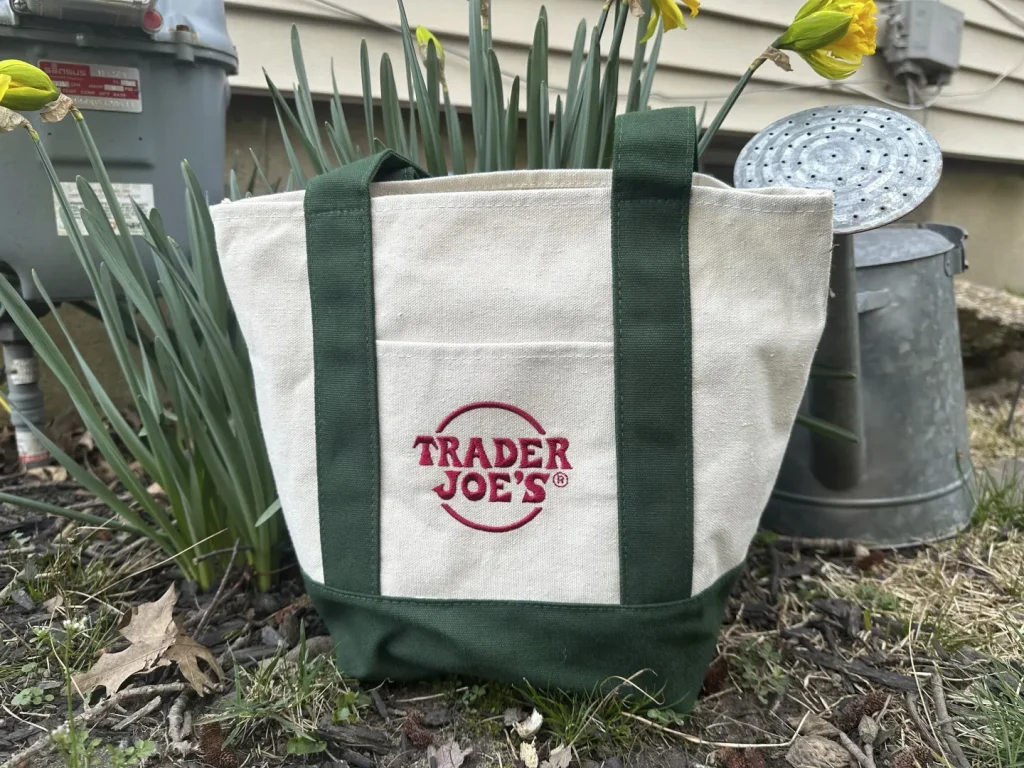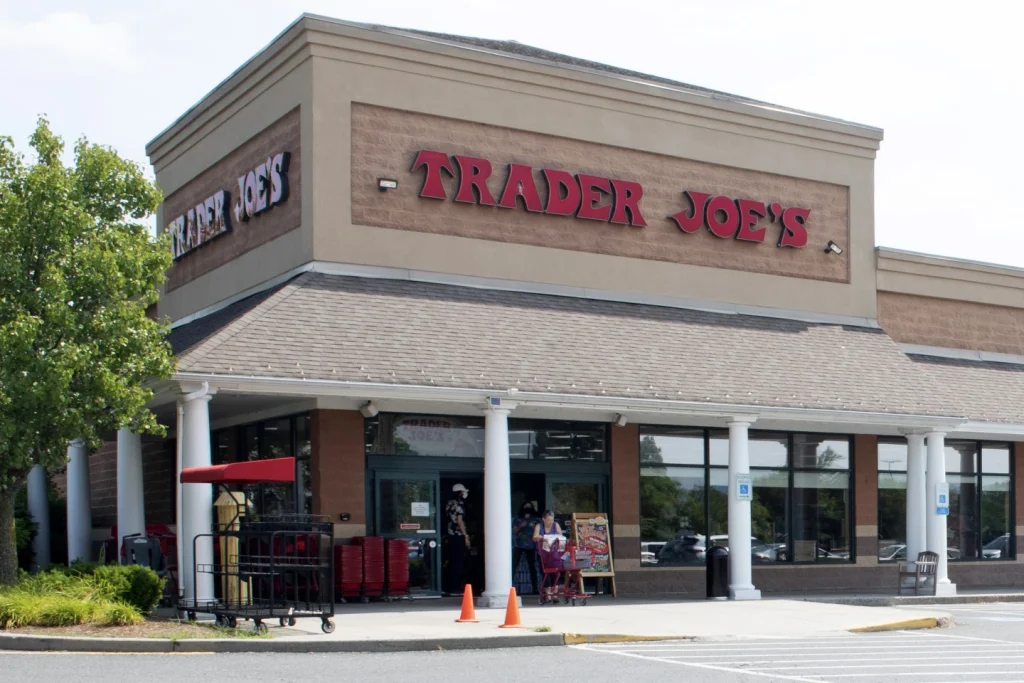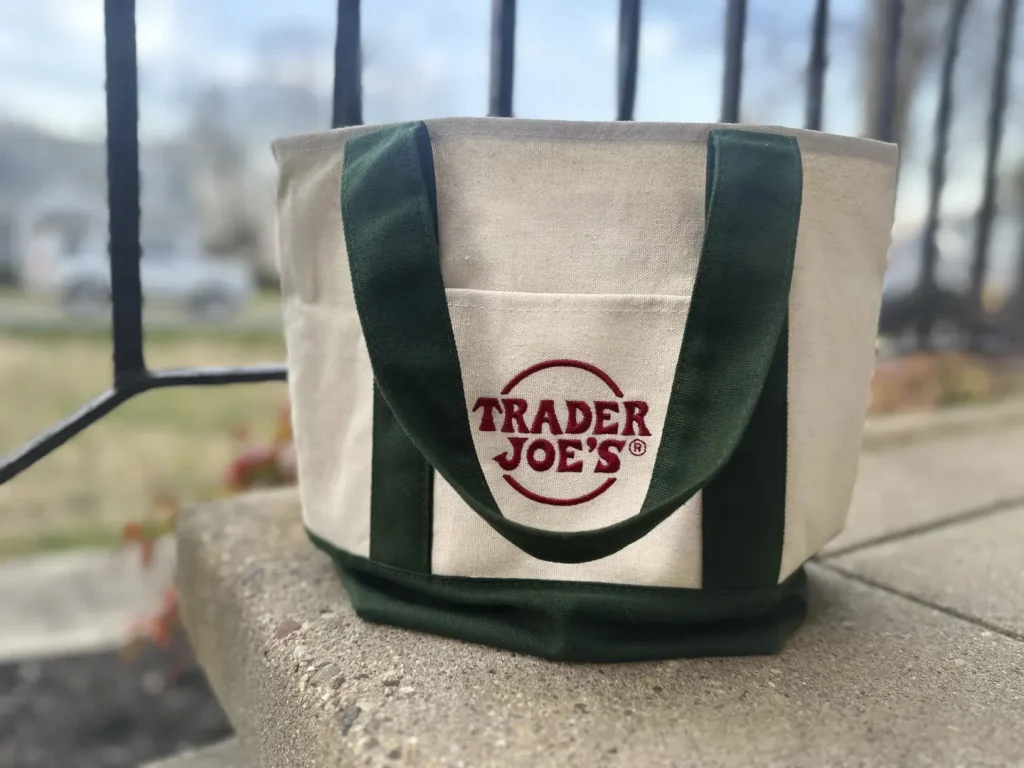The recent frenzy surrounding Trader Joe’s mini canvas tote bags has sparked a wave of excitement and speculation across social media platforms, leading to a surge in reselling activities.
This seemingly innocuous item, available in four vibrant colors – blue, red, green, and yellow – has unexpectedly captured the attention of consumers, triggering a rush to acquire these miniature totes.
Priced at a modest $2.99, these bags have now become sought-after commodities, with resellers capitalizing on the hype by listing them on online marketplaces like eBay and Facebook Marketplace at exorbitant prices, far exceeding their original value.
The phenomenon of reselling Trader Joe’s mini canvas tote bags at inflated prices has not only garnered widespread attention but has also underscored the power of social media in shaping consumer behavior and driving market trends.
Videos circulating on various platforms depict eager customers flocking to Trader Joe’s outlets in the hopes of securing one of these coveted totes, while TikTok users have garnered significant viewership by showcasing their personalized and embellished versions of the bags through intricate paintwork, decorative buttons, and embroidered designs.
Nakia Rohde, a spokesperson for Trader Joe’s, acknowledged the unexpectedly swift sales of the Mini Canvas Tote Bags, attributing their popularity to the organic discovery by customers across the nation.
Despite the enthusiasm surrounding these bags, Trader Joe’s remains steadfast in its commitment to prioritizing its in-store customers, emphasizing that the company does not endorse or support the resale of its products.
This stance underscores the brand’s dedication to fostering genuine customer experiences and maintaining the integrity of its offerings in the face of external market forces.
The allure of exclusivity and limited availability has long been a driving force behind consumer behavior and pricing dynamics, with the internet amplifying the impact of such factors.
This phenomenon is not unique to Trader Joe’s mini totes but is reflective of broader trends where scarcity and perceived desirability fuel demand and influence purchasing decisions.
The surge in demand for products like Huy Fong Foods’ Sriracha sauce or the panic buying of essential items during the onset of the COVID-19 pandemic underscores the psychological underpinnings of consumer behavior, where the allure of scarcity and social validation plays a significant role in driving purchasing patterns.
Jay Zagorsky, a clinical associate professor at Boston University’s Questrom School of Business, highlighted the psychological aspect of bulk buying behaviors, noting that the impulse to acquire items perceived as desirable or essential is often driven by a sense of security and preparedness for uncertain future scenarios.
Whether it is the rush to secure Trader Joe’s mini canvas tote bags or the stockpiling of essential goods during times of crisis, the underlying motivations remain consistent, reflecting a fundamental human tendency to seek reassurance and control in the face of uncertainty.
In conclusion, the phenomenon surrounding Trader Joe’s mini canvas tote bags serves as a compelling case study of how social media, consumer psychology, and market dynamics intersect to create trends and shape purchasing behaviors.

While the allure of exclusivity and scarcity may drive initial hype and demand, it is essential for companies like Trader Joe’s to navigate these trends thoughtfully, balancing customer engagement with brand integrity and ensuring a positive shopping experience for all patrons.
As the digital landscape continues to evolve, businesses must remain attuned to shifting consumer preferences and adapt their strategies to meet the evolving demands of a dynamic marketplace.
Exclusivity and limited supply have always been crucial factors that influence prices and consumer behavior.
In recent times, the impact of the internet has further exacerbated these factors, leading to high demand for products that are scarce or exclusive.
This phenomenon has been evident in various instances, such as the frenzy surrounding Huy Fong Foods’ Sriracha sauce or the panic buying of toilet paper at the onset of the COVID-19 pandemic.
According to Jay Zagorsky, a clinical associate professor at Boston University’s Questrom School of Business, social media plays a significant role in shaping consumer behavior.
The portrayal of certain products as desirable or important on social media platforms can lead individuals to hoard these items.
This behavior is driven by a sense of insecurity about future availability, prompting consumers to stock up on products that are perceived as scarce or exclusive.
The recent craze surrounding Trader Joe’s mini totes is a classic example of how limited supply can create a surge in demand. These mini totes have become a viral sensation, selling out in stores across the country.
The scarcity of these bags has fueled a sense of urgency among consumers, driving up their perceived value and leading to a rush to purchase them before they are gone.
Similarly, Stanley cups have also experienced a surge in demand, with limited-edition versions fetching high prices from third-party sellers.
The frenzy surrounding these tumblers has caused chaos at retailers, as consumers clamor to get their hands on the exclusive merchandise before it runs out.
Despite the scarcity of Trader Joe’s mini totes, there is reassurance for consumers who missed out on the initial wave of popularity.
According to Rohde, more mini totes will be restocked in stores in late summer, giving customers another chance to purchase the coveted items.
In conclusion, the interplay between exclusivity, limited supply, and consumer behavior is a complex and dynamic phenomenon.

The influence of social media, coupled with the allure of exclusive products, can create a sense of urgency and drive demand to unprecedented levels.
As seen with the Trader Joe’s mini totes and Stanley cups, the scarcity of certain products can lead to a frenzy among consumers, highlighting the powerful impact of exclusivity on pricing and consumer behavior.
